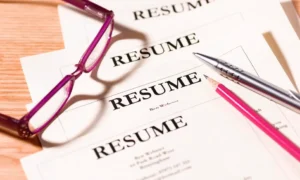Space has always fascinated humans. To most people, space seems to be more intriguing than the deep dark ocean and all that habitat it. Despite being only an hour’s drive above the Earth’s surface, space remains mysterious and alien. As space technology progresses, discoveries reveal interesting insights about life in zero gravity and beyond. Take a look at some fun facts about the space industry!
1: Space is only an hour’s drive away.
Low Earth orbit is only about 60 miles above the Earth’s surface. At highway speeds, it would only take around an hour to drive there. Space is a lot closer you might realize. Satellites orbiting Earth, like communication satellites, travel in Low Earth Orbit which is why they’re able to communicate with us easily. If you were to start driving straight up, you would reach the edge of space in just over an hour!
2: There is no “up” or “down” in space.
Without gravity, there is no concept of up or down. The position of objects relative to each other determines orientation. Astronauts on the International Space Station could orient themselves in any direction, and this lack of orientation can take time and requires spatial awareness to navigate. Since space has no gravity, astronauts can flip, twirl, and spin without feeling dizzy or disoriented. Their sense of balance and direction must adapt to microgravity. Spacecraft and space stations provide handrails and tethers for astronauts to hold onto as they move around to avoid drifting.
3: Astronauts grow taller in space.
Without the compressive force of gravity, the spine elongates. Astronauts can grow to 2 inches in height while in space. However, this effect is temporary, and astronauts will return to their normal height once back under the influence of Earth’s gravity. Spending time in microgravity expands the spine as the vertebrae are not compressed by body weight and gravity. Astronauts who spend long periods in space, like those onboard the International Space Station, could gain a significant amount of height during their mission. Space tourism in the future may advertise space flights to grow taller, even if only temporarily!
4: The Hubble Space Telescope can see a firefly 7,000 miles away.
The telescope orbits above our planet’s atmosphere, giving it a clear view of space. The Hubble can see objects up to 13.4 billion light-years away. It has captured some of the most stunning images of the universe ever seen, expanding our understanding of astronomy and the satellite communication industry. Without atmospheric distortion and light pollution, the Hubble Space Telescope has peered into the farthest reaches of space, seeing distant galaxies formed not long after the Big Bang.
5: First food Eaten in Space was Applesauce
Astronaut John Glenn ate applesauce during the first orbital flight in 1962. Today, astronauts eat various foods, from freeze-dried shrimp cocktails to chocolate pudding cakes. Food in space has come a long way in providing nutritional and tasty meals for astronauts. Applesauce was selected as the first food in space because of its consistency and moisture content. Foods in space must be able to be eaten in microgravity without making crumbs. Food is carefully selected, prepared, and packaged to avoid spillage in space. Space food has become more flavorful but requires rehydration and special preparation.
6: Space Smells like Burnt Steak.
The smell of space is described as a mixture of burnt metal and burnt steak. That is due to the ionization of high-energy particles in the vacuum of space. Without an atmosphere, there are no mediums for smells to travel through, but astronauts describe the smells that linger after spacewalks inside their spacesuits. The smell inside an astronaut’s spacesuit after a spacewalk comes from the interaction of high-energy space radiation with suit materials. The smells of burnt metal and charring meat are produced. This strange smell highlights that space is filled with high-energy particles and radiation that are normally shielded by Earth’s magnetic field and atmosphere.
7: The Cost of Putting a Pound of Payload into space has dropped by a factor of 100 since the 1950s.
In the 1950s, it cost about $20,000 to put a pound of payload into orbit. Today, the cost is less than $200, thanks to technological advances and reusable rockets. Newly developed rockets from SpaceX and others have made access to space much more affordable. The immense costs of early space programs were due to the expendable nature of rockets. Launch systems that can return to Earth and launch again have significantly reduced costs. The reduced cost of reaching space could enable new opportunities for space tourism, space mining, and space-based solar power in the coming decades.
Conclusion
Space travel and space technologies are bringing more opportunities and discoveries. From stunning images of distant celestial bodies to a better understanding of human biology, space science has already revealed fascinating insights, with many more yet to come as space travel becomes more accessible. These fun facts highlight how space is far more interesting than people know. Space may be only an hour’s drive away, but it remains a place full of mystery and wonder.





























